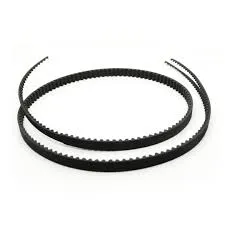- Arabic
- French
- Russian
- Spanish
- Portuguese
- Turkish
- Armenian
- English
- Albanian
- Amharic
- Azerbaijani
- Basque
- Belarusian
- Bengali
- Bosnian
- Bulgarian
- Catalan
- Cebuano
- Corsican
- Croatian
- Czech
- Danish
- Dutch
- Afrikaans
- Esperanto
- Estonian
- Finnish
- Frisian
- Galician
- Georgian
- German
- Greek
- Gujarati
- Haitian Creole
- hausa
- hawaiian
- Hebrew
- Hindi
- Miao
- Hungarian
- Icelandic
- igbo
- Indonesian
- irish
- Italian
- Japanese
- Javanese
- Kannada
- kazakh
- Khmer
- Rwandese
- Korean
- Kurdish
- Kyrgyz
- Lao
- Latin
- Latvian
- Lithuanian
- Luxembourgish
- Macedonian
- Malgashi
- Malay
- Malayalam
- Maltese
- Maori
- Marathi
- Mongolian
- Myanmar
- Nepali
- Norwegian
- Norwegian
- Occitan
- Pashto
- Persian
- Polish
- Punjabi
- Romanian
- Samoan
- Scottish Gaelic
- Serbian
- Sesotho
- Shona
- Sindhi
- Sinhala
- Slovak
- Slovenian
- Somali
- Sundanese
- Swahili
- Swedish
- Tagalog
- Tajik
- Tamil
- Tatar
- Telugu
- Thai
- Turkmen
- Ukrainian
- Urdu
- Uighur
- Uzbek
- Vietnamese
- Welsh
- Bantu
- Yiddish
- Yoruba
- Zulu
دسمبر . 12, 2024 11:09 Back to list
flat belt
The Versatility and Importance of Flat Belts in Modern Engineering
In the realm of mechanical engineering and industrial applications, flat belts play a critical role in the efficient transfer of power and motion. These simple yet effective components have been integral to numerous machines and manufacturing processes, highlighting their versatility and significance.
Flat belts, usually made from durable materials such as rubber, fabric, or synthetic compounds, are designed to transmit power between pulleys. Unlike other types of belts, flat belts have a broad surface area, which enables them to grip the pulleys firmly and distribute load evenly. This feature makes them ideal for operations where high torque transfer is essential, such as in conveyor systems, fans, and various types of machinery.
One of the most notable advantages of flat belts is their ability to handle different types of loads. Whether it's a light-duty application, like small-scale manufacturing or a heavy-duty system, flat belts can be custom-made to suit specific needs. Their design allows them to operate smoothly at varying speeds, making them suitable for both high-speed and low-speed applications. Furthermore, flat belts are less likely to slip compared to round belts, thus ensuring consistent performance.
Another key characteristic of flat belts is their ease of maintenance and installation
. Since they are flat, they can be easily aligned and adjusted, which simplifies the setup process in various machinery. This is particularly beneficial in industrial settings where downtime translates to lost productivity. Regular maintenance is also simplified; flat belts can be easily inspected for wear and tear, allowing for timely replacements that mitigate the risk of operational failures.flat belt

In addition to power transmission, flat belts are also vital in a range of applications, including automation systems and material handling. For instance, conveyor belts used in assembly lines often utilize flat belts to transport products efficiently from one station to another. Their flat surfaces provide a stable platform for goods, reducing the likelihood of slippage or falling during transit. This is especially important in industries like food processing and packaging, where safety and hygiene are paramount.
Moreover, as technology advances, the materials and designs of flat belts have evolved. Modern flat belts are often engineered with advanced composites that enhance their durability and resistance to wear, temperature fluctuations, and environmental factors. This evolution has allowed for the design of belts that require less frequent replacements and can operate under more demanding conditions.
The environmental aspect of flat belts is also worth mentioning. With a growing emphasis on sustainability, manufacturers are increasingly utilizing recyclable materials in their production. Additionally, the efficient design of flat belts contributes to energy savings in various systems, as they often require less power to operate compared to other mechanical transmission methods.
In conclusion, flat belts are a crucial element in countless mechanical systems across various industries. Their ability to effectively transfer power, combined with ease of maintenance and adaptability to different applications, underscores their significance. As engineering continually evolves and strives for greater efficiency and sustainability, flat belts will undoubtedly remain an essential component in modern machinery and industrial processes. With ongoing advancements in material technology and design, the future of flat belts looks promising, ensuring their place as reliable workhorses in the world of engineering for many years to come.
-
Upgrade Power Steering Pump Belt for Smooth, Quiet Operation
NewsAug.27,2025
-
Precision Timing Belt & Chain: Engine Performance & Durability
NewsAug.26,2025
-
Precision Lathe Drive Belts: Durable & Reliable Performance
NewsAug.25,2025
-
84.5 Serpentine Belt: Durable & Precision Fit for Your Engine
NewsAug.24,2025
-
Premium Ribbed Drive Belts for Quiet Power Transmission
NewsAug.23,2025
-
High-Performance Vehicle Timing Belt for Engine Precision
NewsAug.22,2025

